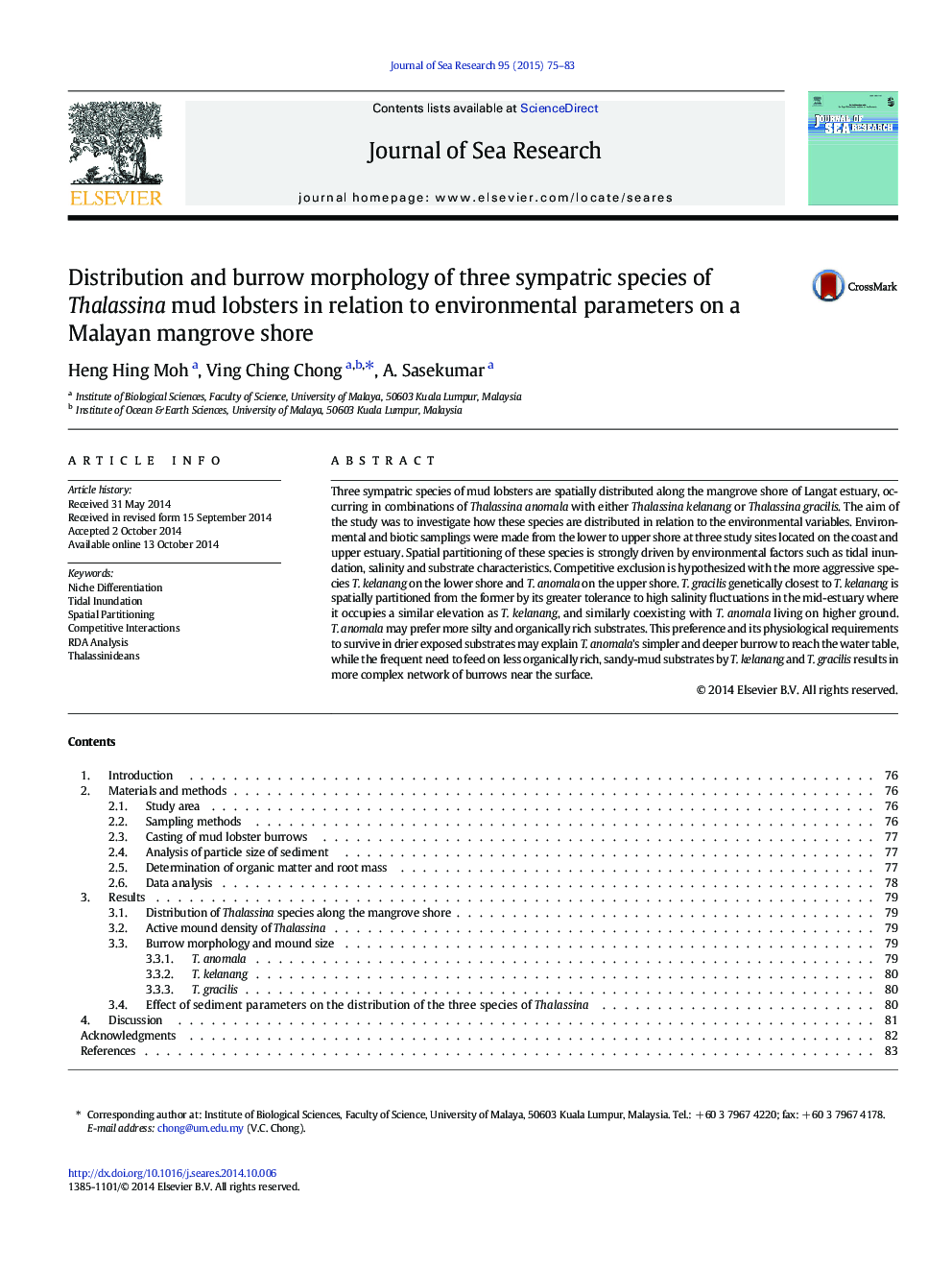| کد مقاله | کد نشریه | سال انتشار | مقاله انگلیسی | نسخه تمام متن |
|---|---|---|---|---|
| 4549748 | 1627479 | 2015 | 9 صفحه PDF | دانلود رایگان |
• Co-occurrence of three Thalassina species is reported for the first time.
• Spatial partitioning mediated by shore elevation, salinity and species interaction
• Feeding and physiological requirements may explain burrow structure and complexity.
Three sympatric species of mud lobsters are spatially distributed along the mangrove shore of Langat estuary, occurring in combinations of Thalassina anomala with either Thalassina kelanang or Thalassina gracilis. The aim of the study was to investigate how these species are distributed in relation to the environmental variables. Environmental and biotic samplings were made from the lower to upper shore at three study sites located on the coast and upper estuary. Spatial partitioning of these species is strongly driven by environmental factors such as tidal inundation, salinity and substrate characteristics. Competitive exclusion is hypothesized with the more aggressive species T. kelanang on the lower shore and T. anomala on the upper shore. T. gracilis genetically closest to T. kelanang is spatially partitioned from the former by its greater tolerance to high salinity fluctuations in the mid-estuary where it occupies a similar elevation as T. kelanang, and similarly coexisting with T. anomala living on higher ground. T. anomala may prefer more silty and organically rich substrates. This preference and its physiological requirements to survive in drier exposed substrates may explain T. anomala's simpler and deeper burrow to reach the water table, while the frequent need to feed on less organically rich, sandy-mud substrates by T. kelanang and T. gracilis results in more complex network of burrows near the surface.
Journal: Journal of Sea Research - Volume 95, January 2015, Pages 75–83
